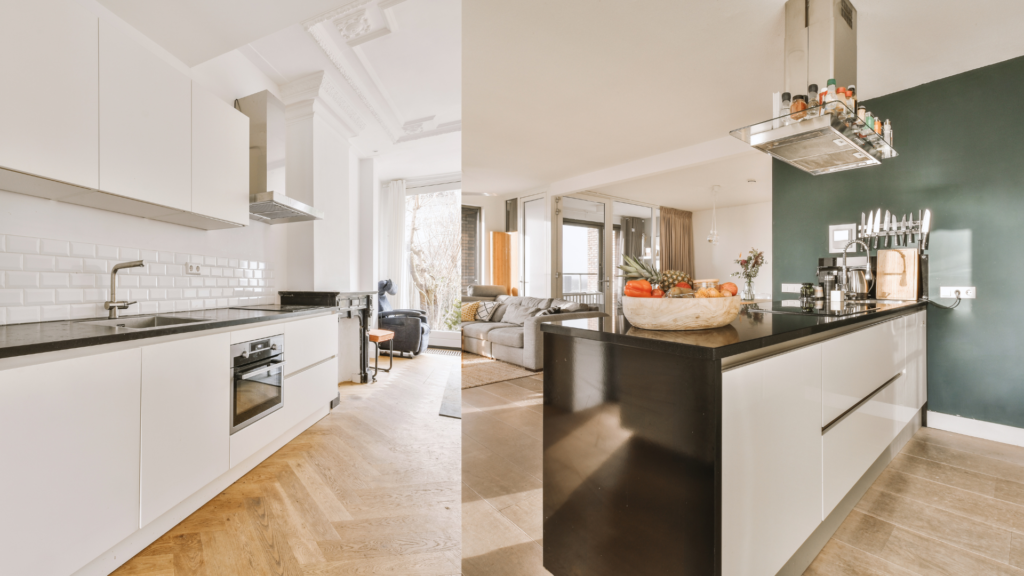The real estate market is evolving rapidly, with more buyers initiating their search online, making first impressions crucial. Traditional home staging, while effective, is time-consuming and costly. Enter virtual staging, a revolutionary technology that allows real estate professionals to digitally furnish and decorate properties, transforming bare spaces into beautifully staged homes with minimal effort. This article delves into how virtual staging is transforming real estate, attracting buyers faster, and driving sales.
What is Virtual Staging?
Virtual staging is a digital solution that enhances real estate listings by using computer-generated imagery (CGI) to add furniture, decor, and other visual elements to photos of empty or outdated spaces. Unlike traditional staging, which involves physically moving furniture into a home, virtual staging allows real estate agents to create a fully furnished look without the time and expense associated with traditional methods. This technology helps potential buyers visualize how the space could look with modern furnishings, making it more appealing and relatable.
Virtual staging also allows for customization, enabling real estate professionals to tailor the design to suit the preferences of their target market, whether that’s a family, a young professional, or a luxury buyer. As a result, it makes listings stand out in a crowded market, attracting more attention and boosting interest.
Benefits of Virtual Staging
1. Cost-Effectiveness
One of the most significant advantages of virtual staging is its affordability compared to traditional staging. Physically staging a property can cost thousands of dollars, depending on the number of rooms and the type of furniture required. In contrast, virtual staging typically costs between $16 and $150 per image, offering a budget-friendly alternative without compromising quality. This lower cost allows real estate agents to enhance more properties within the same budget, ultimately leading to higher profitability.
2. Faster Sales
Homes that are virtually staged tend to sell faster than those that are left vacant or unstaged. According to research, staged homes sell up to 73% faster than their unstaged counterparts. Virtual staging allows potential buyers to form an emotional connection with the property by visualizing themselves living in the space, leading to quicker offers. The visually stunning images grab attention in online listings, drawing in more buyers and increasing the likelihood of a sale.
3. Customization and Flexibility
Virtual staging offers limitless customization options. Unlike traditional staging, where the furniture is physically placed in the home, virtual staging allows real estate agents to tailor the design according to the preferences of their target audience. For example, if a home is being marketed to young professionals, a sleek, modern design with an open floor plan can be virtually staged. Conversely, for a family-oriented listing, a cozy, child-friendly environment with play areas can be showcased. This flexibility makes virtual staging an effective tool for appealing to different buyer demographics.
Virtual Staging Process
The virtual staging process is simple and efficient. Real estate agents or photographers take high-quality photos of the property, which are then uploaded to a virtual staging software or sent to a virtual staging service provider. The software or service provider digitally adds furniture, decor, and other design elements to the images based on the preferences of the agent or property owner. Once the design is finalized, the virtually staged photos are ready to be used in online listings, brochures, or other marketing materials.
Most virtual staging services offer fast turnaround times, with images often ready within 24 to 48 hours. Some providers even offer unlimited revisions, ensuring that the final product meets the client’s expectations.
Challenges and Considerations
While virtual staging offers many benefits, there are some challenges and ethical considerations that real estate professionals need to be aware of.
1. Transparency
It’s essential for real estate agents to disclose that a property has been virtually staged. Misleading buyers by not informing them that the images have been digitally altered can lead to legal issues and damaged trust. Transparency is key; real estate agents should provide both the original and virtually staged images in their listings, clearly labeled to avoid any confusion.
2. Realism
The quality of virtual staging can vary depending on the service provider or software used. Poorly done virtual staging can make a property look artificial or like a video game, which can deter potential buyers. It’s crucial to work with high-quality virtual staging services that offer realistic and high-resolution images. The goal is to create an inviting, lifelike representation of the property, not something that appears overly edited.
3. Customization Limitations
While virtual staging allows for significant customization, there can be limitations in terms of capturing the unique style or ambiance of a home. For example, a seller who has invested in high-end finishes or a particular decor style may find that virtual staging doesn’t fully represent the property’s personality.
Conclusion
Virtual staging has revolutionized the real estate industry, offering a cost-effective, flexible, and visually appealing alternative to traditional staging. By enhancing online listings with stunning images, real estate agents can attract more buyers, speed up sales, and ultimately increase property values. However, it’s essential to approach virtual staging with transparency and ensure that the images used are realistic and reflective of the property’s true potential.
For real estate professionals looking to stay competitive in today’s digital marketplace, virtual staging is a powerful tool that can help them transform listings and close deals faster.






